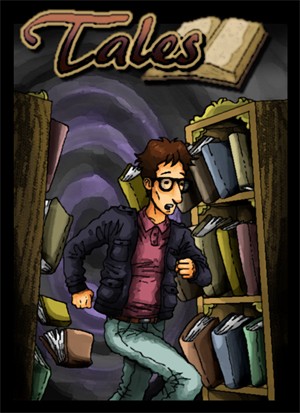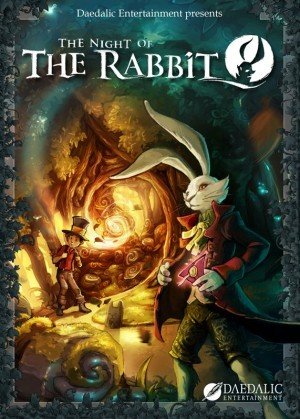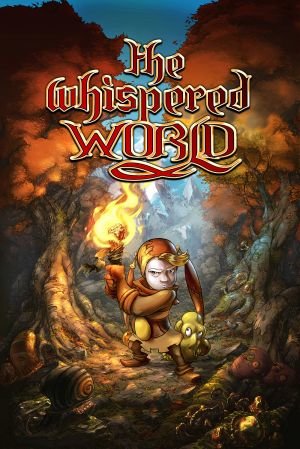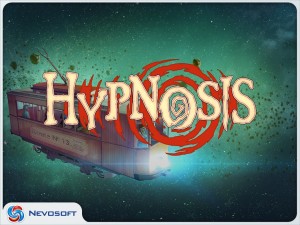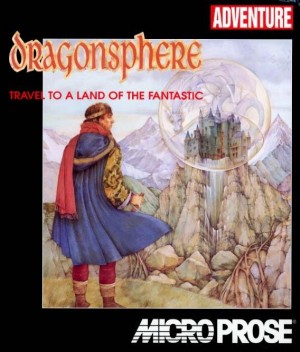Following Freeware: April 2014 releases

This month you can scour the banks of the Thames for lost valuables, search the forest for your missing cat, or delve deep underwater for an octopus’s treasure. Investigators can try to uncover a mystery at a zoo or solve a mysterious theft in Ponyville. More fantastical adventures can be found in a magical book or a fluffy dream-world that may not be all that it seems. Finally, more mundane tasks can tax your brain in unusual ways as you try to move a recalcitrant wallaby or simply plant a potato. All these await in this month’s round-up of games from the freeware scene.
Mudlarks
Mudlarking was a way of living for many poor people for centuries. Scavengers searched the banks of the Thames for valuable things they could sell, and after a day's hard work a family could pay the rent and buy some food if they were lucky. Vincent and Winston are two mudlarks in modern London, but they only search for fun, to see if they can find interesting things. One day Vincent finds a beautiful golden locket, in which there are pictures of a young girl and an older lady. The chain of the locket is missing but because it's getting late they decide to go home and come back later. A few days later, Winston arrives at the shore, only to find that Vincent is nowhere to be found. The search for his missing friend soon turns into a bigger mystery involving ghosts and the two locket photos. Gradually Winston learns more about these women and what happened to them.
 Mudlarks, by Cloak and Dagger Games, is a full-length point-and-click adventure whose story and puzzles are on par with even good commercial games. In fact, this game was originally announced as a commercial endeavour before being released as freeware. The game is played in third-person mode, with realistic 2D backgrounds in which the characters can move around. The interface is simple, with actions like look, talk, walk, etc. that you can choose by pressing the right mouse button. The inventory is accessed through an icon in the upper left corner of the screen.
Mudlarks, by Cloak and Dagger Games, is a full-length point-and-click adventure whose story and puzzles are on par with even good commercial games. In fact, this game was originally announced as a commercial endeavour before being released as freeware. The game is played in third-person mode, with realistic 2D backgrounds in which the characters can move around. The interface is simple, with actions like look, talk, walk, etc. that you can choose by pressing the right mouse button. The inventory is accessed through an icon in the upper left corner of the screen.
Winston travels to many places in London: a library, a posh hotel, the city hall, and even a paranormal gathering, to name a few. The backgrounds and characters are all photographs blended together, which, together with the narrow vertical black lines that you see in all the images when playing in full screen mode, give the game a somewhat amateurish yet distinctive look. Some of the scenes scroll as you move Winston around, and the backgrounds are not totally static: animals move about in their cages or tanks, birds fly overhead, and people drink in the pub. The way the characters walk around the screen is a bit awkward, however.
You’ll hear ambient noises and sound effects as you explore, but there is no voice acting in this game. When a character is speaking, his or her head and mouth move to give the impression of talking, and their lines appear as text in the middle of the screen in large letters that only go away when you click the mouse. The music fits the various settings well. It mostly consists of soft piano tunes played in the background, but in one part of the game the music becomes louder and plays a role in the story.
From the beginning, you’ll feel the suspense Winston experiences when looking for his missing friend. To proceed, you have to talk to people, perform tasks so others will do you a favour, and overcome obstacles that hamper your investigation. Most of the puzzles fit nicely into the story and don't hold up the pace artificially, but you don't often get much feedback in solving them. The game only tells you that certain things you try are not possible, even when they look logical. But it usually turns out that the eventual solution is even better and more logical than what you first came up with. Sometimes the way the story proceeds is a bit too coincidental, like when Winston needs an item and conveniently finds it nearby, or when he overhears a conversation that gives him just the information he needs at that particular moment. But such shortcuts are few and far apart, and entirely excusable in what is easily one of the best freeware adventures released in recent memory.
Mudlarks can be downloaded from the game’s official website.
My Little Investigations: Case 1- True Blue Scootaloo
Equestria… a place where the role humans play in our world has been taken by ponies instead. Within this realm, the town of Ponyville is usually quiet and serene. But this sleepy little town has woken up to find that criminals have struck in the night. Someone has broken into Rarity’s Carousel Boutique, making off with the precious gem True Blue, and the shop owner’s even more precious cat, Opalescence. With the window smashed and the ground floor ransacked, it seems like the work of a desperate criminal. The Canterlot investigation team is despatched to investigate, a pair of duff detectives whose faulty detective skills and wild accusations Ponyville has suffered from in the past. When initial reports of the crime point to young filly Scootalot as the culprit, Twilight Sparkle knows there is only one thing to do. She must investigate this crime herself and find the true culprit first.
 Equestrian Dreamer have made a fan game that is both fun to play and faithful to its source material. Taking the My Little Pony: Friendship is Magic TV series as inspiration, the graphics mirror the bright cartoon style of the show. Familiar locations abound, from the Boutique crime scene to the Cutie Mark Crusaders clubhouse and beyond. The characters are smoothly animated throughout. During the extensive conversations, close-ups of the characters appear, showing more detail. These also display expressions well, with animations of dramatic actions such as the accusatory hoof-pointing. All characters are fully voiced, with the actors doing decent impressions of the show voices. The voice work is of high quality, and has been recorded in a clear and consistent manner. The music also follows the style of the show, with jolly, happy tunes, though more dramatic pieces play when confronting suspects.
Equestrian Dreamer have made a fan game that is both fun to play and faithful to its source material. Taking the My Little Pony: Friendship is Magic TV series as inspiration, the graphics mirror the bright cartoon style of the show. Familiar locations abound, from the Boutique crime scene to the Cutie Mark Crusaders clubhouse and beyond. The characters are smoothly animated throughout. During the extensive conversations, close-ups of the characters appear, showing more detail. These also display expressions well, with animations of dramatic actions such as the accusatory hoof-pointing. All characters are fully voiced, with the actors doing decent impressions of the show voices. The voice work is of high quality, and has been recorded in a clear and consistent manner. The music also follows the style of the show, with jolly, happy tunes, though more dramatic pieces play when confronting suspects.
From a gameplay perspective, the Phoenix Wright games seem to have proven an inspiration, though with point-and-click rather than touch-screen controls. You gather evidence and use it to convince others to reveal information. In some cases, individuals are unwilling to talk about particular subjects, so presenting evidence that proves they know something about one unlocks that topic for further discussion. In others, you will use information to dispute the statements of hostile witnesses. Twilight even copies Ace Attorney’s accusation gesture of challenging a statement. The game also includes a partner system, with your current partner offering special skills that you lack. The most commonly used is Rarity’s ability to detect small items, which allows you to find items not even visible as pixel hunts. The various features have in-game tutorials, with the irrepressible Pinkie Pie explaining to Twilight how they work. These are generally amusing and do not break immersion, though there is an option to turn them off. The story is well written, with a logical progression of events and a satisfying solution that comes with a positive lesson at the end. Whilst no external knowledge is needed to complete the game, fans of the series will also find it packed with references to events in various episodes. Enjoy this free game while you can as, with the talent on display here, I would not be surprised if these developers made a move to commercial operation soon.
My Little Investigations: Case 1 – True Blue Scootaloo can be downloaded from the developers’ website. There are versions for PC, Mac and Linux available.
Dreaming Mary
Mary enjoys her time in her fluffy pink dream world. With her friends Bunnilda, Penn Guindel and Foxanne to play with, it is a place of endless fun. Then there is Boaris. Boaris likes to have special play time just between the two of them. But that comes later; now is the time for games with her other old friends. She’s perfectly safe here. Nothing can harm her in this jolly dream world after all… Can it?
 Dreaming Games have created a game whose apparent lighthearted simplicity hides a darker depth. The largely pink-tinged graphics have a style reminiscent of Japanese RPGs, with stylised architecture and characters with big eyes, but the action is presented from the side, with all movement except through doors shown only in two dimensions. Mary herself is depicted as a young girl in a simple knee-length dress, while her companions are all anthropomorphic animals. When you converse with them, you get larger close-ups of the non-player characters, with expressions that match their feelings. The characters are simply animated, with idle animations such as the maid Bunnilda sweeping the floor. The soundtrack is well-crafted, with each companion accompanied by their own special variation of the same theme. Bunnilda is accompanied by a gentle string and xylophone version, whereas Foxanne’s version of the same tune is played with trendy horns and percussion fitting the wine bar appearance of her room. There is also a brief amount of voice work and several sound effects.
Dreaming Games have created a game whose apparent lighthearted simplicity hides a darker depth. The largely pink-tinged graphics have a style reminiscent of Japanese RPGs, with stylised architecture and characters with big eyes, but the action is presented from the side, with all movement except through doors shown only in two dimensions. Mary herself is depicted as a young girl in a simple knee-length dress, while her companions are all anthropomorphic animals. When you converse with them, you get larger close-ups of the non-player characters, with expressions that match their feelings. The characters are simply animated, with idle animations such as the maid Bunnilda sweeping the floor. The soundtrack is well-crafted, with each companion accompanied by their own special variation of the same theme. Bunnilda is accompanied by a gentle string and xylophone version, whereas Foxanne’s version of the same tune is played with trendy horns and percussion fitting the wine bar appearance of her room. There is also a brief amount of voice work and several sound effects.
Despite its initial appearance, this is not a game for the easily shocked or for children. Whilst it is possible to play straight through without disturbing the happy veneer of the dream world much, even then there are hints of something less pleasant. Delving deeper into the hidden secrets of the game allows for several different endings, most of which reveal darker tones beneath the jolly surface. Control is handled through the keyboard, with the radio in the opening room providing some guidance on play. Puzzles are fairly simple in general, requiring a little bit of thought and the occasional bit of research nearby. Getting the best ending will require several playthroughs, each uncovering more of the darkness beyond the main storyline.
Dreaming Mary can be downloaded from the developer’s website. Both PC and Mac versions are available.
Bruce Quest: Secrets of the Outback
Bruce has had a long day, scouring the outback for a stone even bigger than Uluru. That’s a lot of effort for a true blue cobber, and now all he wants to do is kick back with a tinnie at home. Sadly, the road to Bruce’s pad is blocked by a wallaby that shows no sign of moving any time soon. If Bruce is going to get back in, he’s going to have to find a way to shift this critter. Better head into town and see if anyone can help him. Besides, it will be a good chance to pick up the beer quota that every Australian is entitled to.
 Alex Scobell has produced a game that is darkly humorous, though somewhat foul-mouthed. The graphics are done in a high-end cartoon style, with character features slightly exaggerated in a caricature style. The “Wise Man” of the town Dave-O is a fat old man wearing only a thong, whilst the beer seller’s eyes are covered by blond hair and a cork hat. These characters are decently animated, both for walking and talking and for background animations such as a dog that continually barks. The setting is one of bright sun and sand that many would associate with Australia, the buildings apparently built of rough planks and corrugated iron. The game is fully voiced to an acceptable standard, though the recording quality varies somewhat. Background music is mainly an extended didgeridoo piece, though a version of “Waltzing Mathilda” plays in the beer shop.
Alex Scobell has produced a game that is darkly humorous, though somewhat foul-mouthed. The graphics are done in a high-end cartoon style, with character features slightly exaggerated in a caricature style. The “Wise Man” of the town Dave-O is a fat old man wearing only a thong, whilst the beer seller’s eyes are covered by blond hair and a cork hat. These characters are decently animated, both for walking and talking and for background animations such as a dog that continually barks. The setting is one of bright sun and sand that many would associate with Australia, the buildings apparently built of rough planks and corrugated iron. The game is fully voiced to an acceptable standard, though the recording quality varies somewhat. Background music is mainly an extended didgeridoo piece, though a version of “Waltzing Mathilda” plays in the beer shop.
There is a lot of swearing in this game right from the start, so the young and easily offended should keep away. This game was originally made for the “Moustache”-themed MAGS competition, making for an impressive production in such a short space of time. Control is handled using the standard AGS four-cursor point-and-click scheme. Your quest is mainly advanced by conversation with the other inhabitants of town. There is a lot of optional dialogue on top of the main storyline, mostly poking fun at the stereotyped image of the boozy Ozzie. You will also make use of a fairly small inventory to advance. Completing the quest rewards you with a look at the rock bigger than Uluru, and a song from the whole cast that’s as unsuitable for gentle ears as most of the dialogue.
Bruce Quest: Secrets of the Outback can be downloaded from the AGS website.
Tales (tech demo)
With the old librarian dead, Alfred Walsh applies for the vacancy. He cannot believe his luck: a job that requires almost nothing, and with good pay to boot! At the beginning of his first day, he is warned not to leave the library from 8:00 to 18:00 and not to mess things up, or he will deeply regret it. Wondering what he could ever mess up in a library, Alfred soon finds a small wooden chest. After some fiddling to get it open, he finds a black book inside. When leafing through it, Alfred unwittingly releases Oblivion, Destroyer of Tales! Oblivion sends all humanity's stories to… well, oblivion, destroying human history and culture in the process, so he will have to be recaptured. Doing so will send Alfred far away in space and time, where he will meet famous people from familiar tales all over the world, from Merlin to Gilgamesh.
 Inspired by the spirit of the old Sierra classics, the early tech demo for Tales was made by the Italian duo Ape Marina, who also made Donald Dowell and the Ghost of Barker Manor. The pixel art graphics are drawn with care, as texture can be seen on Alfred's clothes and there are other such small details on every screen. The game is played in third-person mode, with Alfred moving from screen to screen in magical as well as mundane ways. Some scenes scroll as you walk through them. You’re accompanied on your quest by beautiful, high quality music that is well suited to the situations you find yourself in. An eerie tune is played when Alfred is in trouble, and when he is standing in front of a city's gates we hear music from the appropriate region. There are also ambient sounds like Alfred's footsteps and the clicking of locks to be heard. There is no voice acting, however. The dialogue is only visible in text balloons, accompanied by a portrait of the person speaking.
Inspired by the spirit of the old Sierra classics, the early tech demo for Tales was made by the Italian duo Ape Marina, who also made Donald Dowell and the Ghost of Barker Manor. The pixel art graphics are drawn with care, as texture can be seen on Alfred's clothes and there are other such small details on every screen. The game is played in third-person mode, with Alfred moving from screen to screen in magical as well as mundane ways. Some scenes scroll as you walk through them. You’re accompanied on your quest by beautiful, high quality music that is well suited to the situations you find yourself in. An eerie tune is played when Alfred is in trouble, and when he is standing in front of a city's gates we hear music from the appropriate region. There are also ambient sounds like Alfred's footsteps and the clicking of locks to be heard. There is no voice acting, however. The dialogue is only visible in text balloons, accompanied by a portrait of the person speaking.
The interface is very simple, with Alfred making a more or less helpful remark about objects when you right-click on them. Left-clicking makes Alfred do something to or with the item, if possible. When the cursor is moved to the top of the screen Alfred's inventory becomes visible. The puzzles are moderately hard, well thought out, and perfectly integrated into the story. Solving most of them takes some cunning use of the items in your inventory, but you also have to do some 'social engineering' and use your memory. The story develops smoothly and with no inexplicable strange turns or twists. Unfortunately, since this is just a demo, you will find that after having helped Alfred through some peculiar situations, the game suddenly ends with the story unfinished. It’s entertaining so far, so here’s hoping the developers finish this game soon so we can enjoy Alfred's quest to save the world to the fullest.
The tech demo for Tales can be downloaded from the developer’s website.
The Earl Octopusor
An old sailor finds more allure in the sea than simply riding the waves themselves. He has spied a beautiful mermaid and fallen madly in love with her. Even better, she has fallen madly in love with him as well. But not everyone is happy for this loving couple. The giant sea beast known as the Earl Octopusor does not approve of this match, and drags both to his underwater lair. Alerted by a last message sent by her sailor friend, Miss Libellule sets forth on a journey beneath the waves to rescue him. The fact that the Earl is rumoured to have a large treasure trove is a secondary incentive, of course.
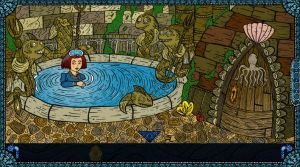 Jo99 brings back his heroine from The Queen of Snakes for another daring adventure. Despite the protagonist link, this game can be played entirely on its own. The graphics have the same hand-drawn look, slightly stylised, but with a wealth of background detail. You will explore the seabed, work your way through underwater caves and finally reach the stockpiled treasure of the Earl himself. Along with the static detail in the various scenes, most include some sort of animation as well. These largely consist of marine life, from a jellyfish lazily floating by to a shark sweeping past the windows of the sunken boat. There are also a handful of well-animated cutscenes. Sound includes various watery effects, as well as the clanking of machinery and the squeals of freed mermaid prisoners. There is also a dramatic soundtrack accompanying the action.
Jo99 brings back his heroine from The Queen of Snakes for another daring adventure. Despite the protagonist link, this game can be played entirely on its own. The graphics have the same hand-drawn look, slightly stylised, but with a wealth of background detail. You will explore the seabed, work your way through underwater caves and finally reach the stockpiled treasure of the Earl himself. Along with the static detail in the various scenes, most include some sort of animation as well. These largely consist of marine life, from a jellyfish lazily floating by to a shark sweeping past the windows of the sunken boat. There are also a handful of well-animated cutscenes. Sound includes various watery effects, as well as the clanking of machinery and the squeals of freed mermaid prisoners. There is also a dramatic soundtrack accompanying the action.
The Earl Octopusor does not wish for just anyone to enter his realm. Many code locks and mechanical puzzles bar the route to his treasury. There is also a large inventory to contend with, some of which will need to be combined. Other items must be examined more closely to reveal their secrets. The wealth of background detail can make it difficult to tell between useful items and things that are just scenery. Select ‘Easy’ mode at the start and the cursor will change colour when you can interact, making finding items easier. ‘Normal’ mode excludes this feature for those wishing not to receive such cues. A modicum of backtracking is required to solve some puzzles, though the distances covered are fairly small. Whilst the ending brings a satisfying conclusion to this escapade, it also implies we will see more of Miss Libellule in the future.
The Earl Octopusor can be played online at the developer’s website.
Edmund and the Potato
It's a beautiful but slightly overcast day. Edmund wakes up and decides that today is a good day to plant his potato. This poses a small problem, though: to reach the place where he wants to plant it, he must pass the scary specter Emanuel in the woods. It’s going to take a few key items and some ingenuity to do that.
 The Fool’s Edmund and the Potato is a jolly game in all aspects, making for a really enjoyable experience. The story is short but fun and has a nice twist, the minimalist pixel art graphics are colorful, and the music is cheerful, although very repetitive. The ‘80s-style graphics look a bit like they were designed by a child: Edmund's house is basically a triangle on top of a box with a door in it, and the sun has eyes that follow Edmund wherever he goes. The people in the game have heads that are bigger than their bodies, and their feet seem to turn around in circles when they move. There are no voices in the game, as all dialogue is displayed as text. A different text color is used for each character.
The Fool’s Edmund and the Potato is a jolly game in all aspects, making for a really enjoyable experience. The story is short but fun and has a nice twist, the minimalist pixel art graphics are colorful, and the music is cheerful, although very repetitive. The ‘80s-style graphics look a bit like they were designed by a child: Edmund's house is basically a triangle on top of a box with a door in it, and the sun has eyes that follow Edmund wherever he goes. The people in the game have heads that are bigger than their bodies, and their feet seem to turn around in circles when they move. There are no voices in the game, as all dialogue is displayed as text. A different text color is used for each character.
The game is played in third-person mode, with only four screens to explore. Edmund can walk from one screen to the next by clicking the cursor on the appropriate edge of the current location. Left-clicking an object makes Edmund do something with it, and right-clicking causes him to offer an observation about the object. The puzzles are very simple and basically solve themselves. As the game progresses, Edmund collects a few objects that are displayed in the top left corner of the screen. Clicking on one makes the cursor change into the item, which can then be used on certain objects in the environment. The things the characters say are often very funny and make the game worth trying out.
Edmund and the Potato can be downloaded from developer’s website.
Cat game
Mika is obsessed with cats, having cat print wallpaper and watching cat videos on her computer. The love of her life is her own real cat, Toby, whom she plays with every day. Then one morning she wakes to find Toby has gone missing. A little bit of investigation shows that, over the years, Toby has not been the only cat to wander off and not come back. Not wanting to be deprived of her furry friend, Mika sets off on a quest to find out where all these cats have been going.
 Amitie and Halcy’s game is definitely fond of creatures of the feline persuasion. The presentation is a top-down look which resembles early 8-bit RPGs. Scenery is rendered in a simple black-and-white line-drawn style, though with enough detail to recognise such items as trees and gravestones. The characters are done in the same low resolution, but have splashes of colour in their clothing and are different enough in appearance to distinguish one from another. Animation is basic, though this is largely due to the limitations of the graphics used. The soundtrack consists of a number of mostly jolly synthesised tunes, with moderately short loops. There is also a smattering of sound effects, such as thunder when a storm hits.
Amitie and Halcy’s game is definitely fond of creatures of the feline persuasion. The presentation is a top-down look which resembles early 8-bit RPGs. Scenery is rendered in a simple black-and-white line-drawn style, though with enough detail to recognise such items as trees and gravestones. The characters are done in the same low resolution, but have splashes of colour in their clothing and are different enough in appearance to distinguish one from another. Animation is basic, though this is largely due to the limitations of the graphics used. The soundtrack consists of a number of mostly jolly synthesised tunes, with moderately short loops. There is also a smattering of sound effects, such as thunder when a storm hits.
Using keyboard controls, you will start by asking around town after your missing pet. Some characters will give you hints of seeing Toby, but will require you to assist them in some way before divulging their information. This will include working your way through a small maze with movable crates blocking some paths, and a game of hide-and-seek. Later you will assist a postal service to deliver some imperfectly addressed letters and solve another maze that arises when previously open pathways are blocked. Despite the RPG look, there is no combat, and no dead ends are possible. The block-shifting puzzle is simple and can be reset by leaving the building containing it.
Cat game can be downloaded from the developers’ website.
Cody Crazy Zoo
Cody Jones’s detective agency has not been going so well of late. He had a couple of high profile cases, but work has now dried up. Several months behind on his rent, and with the landlord breathing down his neck, he needs a big score right now. Then a distressed zoo owner comes bursting into his office. It appears someone has been using his zoo animals to commit crimes, and he wants Cody to find out who. With a client willing to pay an extortionate fee up front, how could Cody say no?
 Inkagames’ laid-back detective gets another outing, having previously engaged in a Katy Perry Rescue. This time his case takes him to a veritable menagerie. The graphics feature the same bright cartoon style of all the developer’s games, with thick lines and blocks of colour painting a jolly scene. The characters are similarly simple, though with slightly over-large heads depicting real people. In particular, a winner of an online model-making competition held by inkagames appears in this game as an interactive NPC. Animations are effectively done, including a lion stretching from a sleep and some mischievous monkeys swinging on vines. Music is provided by the same action-theme loop that is used in many of inkagames’ productions.
Inkagames’ laid-back detective gets another outing, having previously engaged in a Katy Perry Rescue. This time his case takes him to a veritable menagerie. The graphics feature the same bright cartoon style of all the developer’s games, with thick lines and blocks of colour painting a jolly scene. The characters are similarly simple, though with slightly over-large heads depicting real people. In particular, a winner of an online model-making competition held by inkagames appears in this game as an interactive NPC. Animations are effectively done, including a lion stretching from a sleep and some mischievous monkeys swinging on vines. Music is provided by the same action-theme loop that is used in many of inkagames’ productions.
With a teleporter map that allows you to leap around the zoo, you will find yourself travelling back and forth a lot. A simple point-and-click control scheme runs the action. As with previous games, there is an extensive inventory, all of which is put to good use by the end. Many of these inventory items are animals that will assist you in various areas, once you have earned their trust. Some items have more than one use, and there are a few codes to be deciphered as well. There are a handful of timed events, though all have fairly generous timing and are endlessly repeatable. There are also some game-over events, such as when Cody checks under an elephant that chooses that moment to sit down. All of these come with a clue to resolving the problem, and a button that takes back the fateful error. Whilst these have some amusement value, they mostly result from obviously inadvisable actions.
Cody Crazy Zoo can be played online at the developer’s website.
Other new releases
Not all games are created equal, and freeware games especially come in all shapes and sizes. Not to be overlooked, the following list might also be of interest, though these games may be significantly shorter or less polished, more experimental titles than those detailed above, some perhaps only borderline adventures to begin with.
Electric Tortoise by Dillon Rogers – When a robot apparently kills its master, a police detective must determine how it could have broken the laws of robotics.
My Little Secret by Theine – A little boy wakes up to another new day, but does he have a little secret to hide?
Untrusted by Greg Shuflin & Alex Nisnevich – No prison can hold you, if you have the knowledge to reprogram its structure.
Max Skyler: Stolen Relic by Selfdefiant – When a priceless relic is stolen, detective Max Skyler is called in to find it.
Edgar’s Dream by cheshirecat1582 – Are you simply dreaming, or are you trapped inside a nightmare?
That’s it for this month. Think we’ve missed a gem or want to tell us about your own game? Then pop in to our Adventure forum and tell us about it!
Stephen Brown and Willem Tjerkstra contributed to this article.







